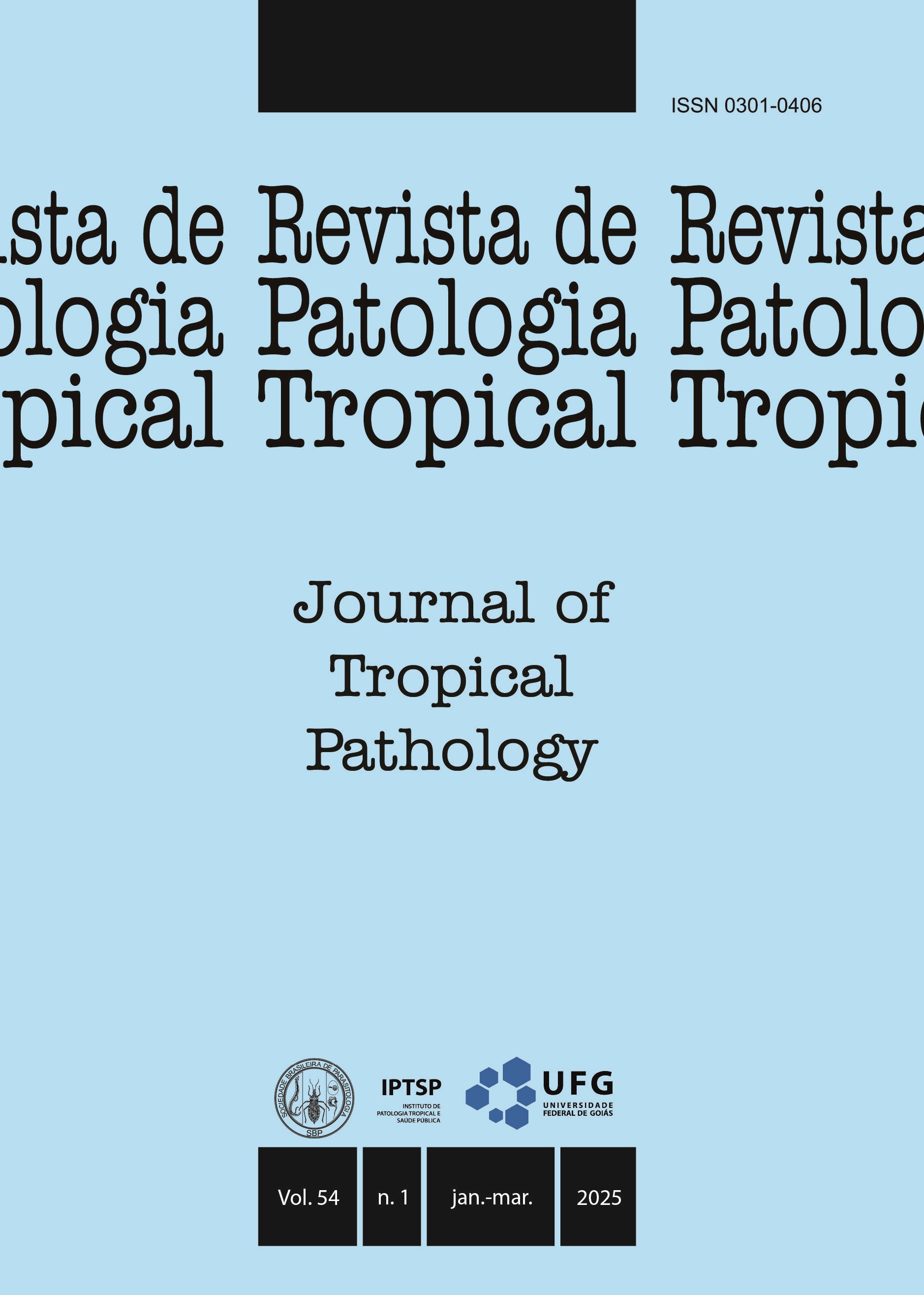Emergent fungal disease: application of low-cost phenotypic identification for Candida auris laboratory diagnosis
DOI:
https://doi.org/10.5216/rpt.v54i1.81041Resumo
The emergent species Candida auris presents a significant concern to the scientific community because of its ability to cause outbreaks in hospitals and healthcare units, as well as the challenges associated with its identification via classical methodologies. This study aimed to improve the performance of an accurate and low-cost phenotypic identification method for C. auris. The modified salt stress resistance method was employed as a phenotypic test for diagnostic differentiation between C. auris and other closely related yeast species on the basis of their biochemical profiles, which can lead to diagnostic errors. The results indicated that the C. auris isolates were thermohalotolerant at the tested NaCl concentrations, demonstrating their ability to grow and alter the pH of the medium within 24 hours at 42 °C. This profile contrasted with that observed for other evaluated Candida species, including Clavispora lusitaniae (syn: Candida lusitaniae), Pichia kudriavzevii (syn: Candida krusei), Meyerozyma guilliermondii (syn: Candida guilliermondii), Candida albicans, Candida dubliniensis, Nakaseomyces glabratus (syn: Candida glabrata), Candida parapsilosis, and Candida haemulonii. Complementary phenotypic methods (Vitek 2 version 9.2) and molecular techniques (MALDI-TOF MS version 3.0) successfully identified all the tested yeasts. Although, MALDI-TOF was unable to identify the C. auris samples. Consequently, as automated methods are not error-free, the modified thermohalotolerance test has proven to be a sensitive, low-cost, and effective complementary methodology for the phenotypic identification of C. auris.
KEY WORDS: Candida auris; phenotyping; diagnosis; thermohalotolerance.
Downloads
Downloads
Publicado
Como Citar
Edição
Seção
Licença
The manuscript submission must be accompanied by a letter signed by all authors stating their full name and email address, confirming that the manuscript or part of it has not been published or is under consideration for publication elsewhere, and agreeing to transfer copyright in all media and formats for Journal of Tropical Pathology.

